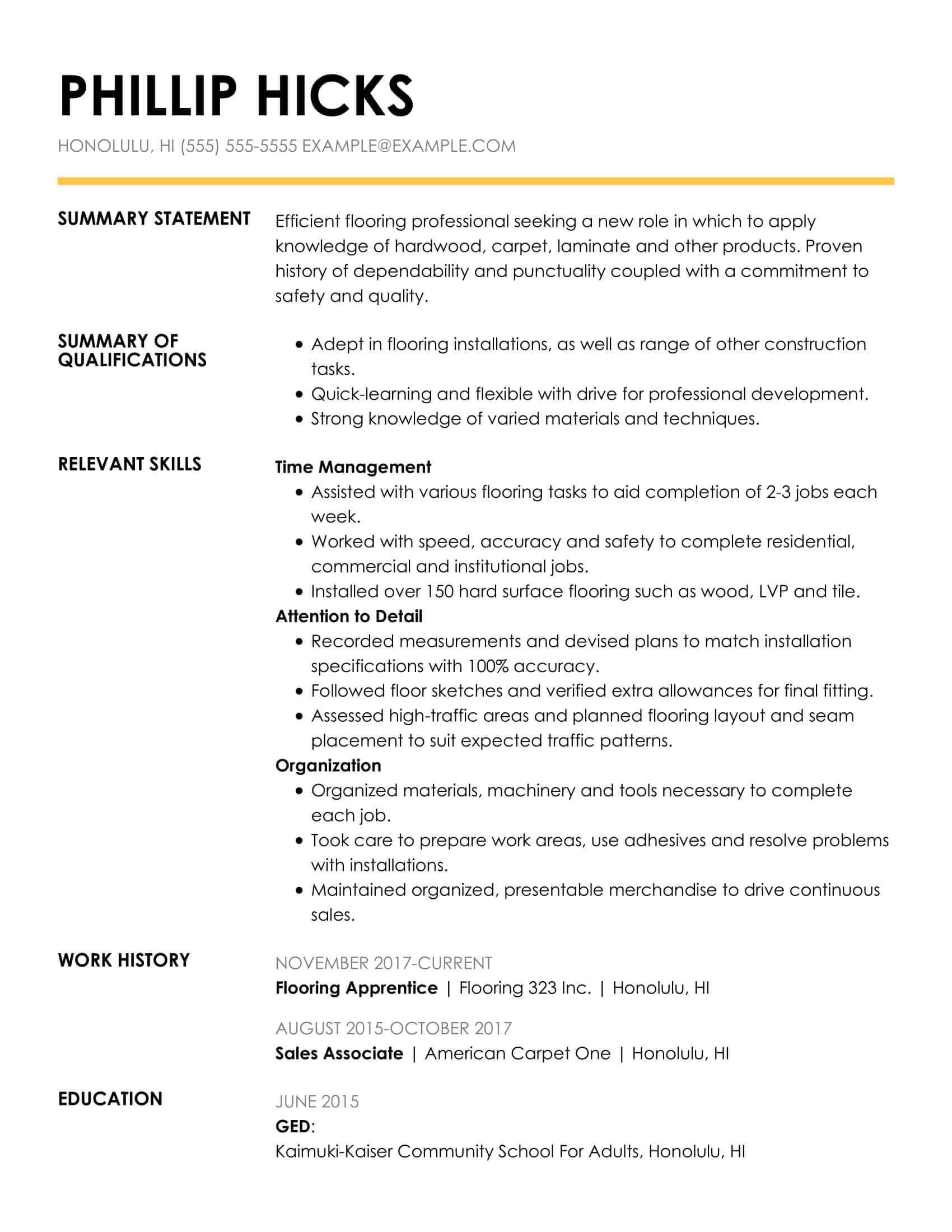Carpenter’s Apprentice
Entry-level applicants in the construction industry may benefit from using a functional resume format like the one above. Its emphasis sits squarely on professional skills and qualifications. Work history appears too, but its placement in the sidebar gives it less weight than if it were at the top of the document. This resume format devotes the most real estate to the job seeker’s wide variety of skills and qualifications, which will likely make him an attractive potential hire.
Build My Resume

















